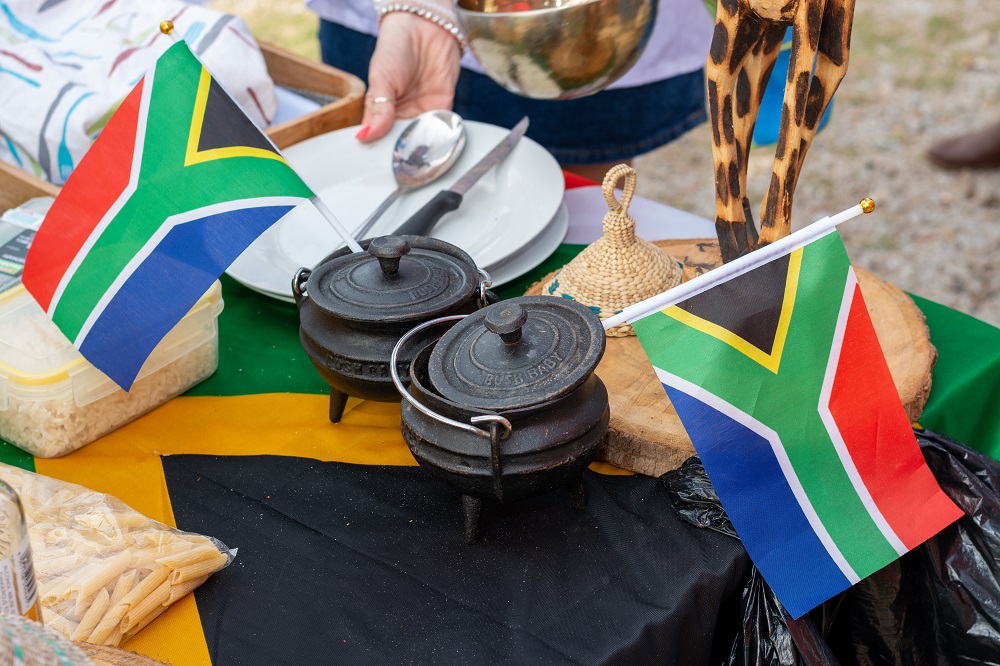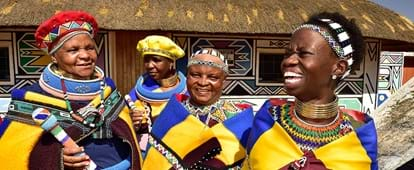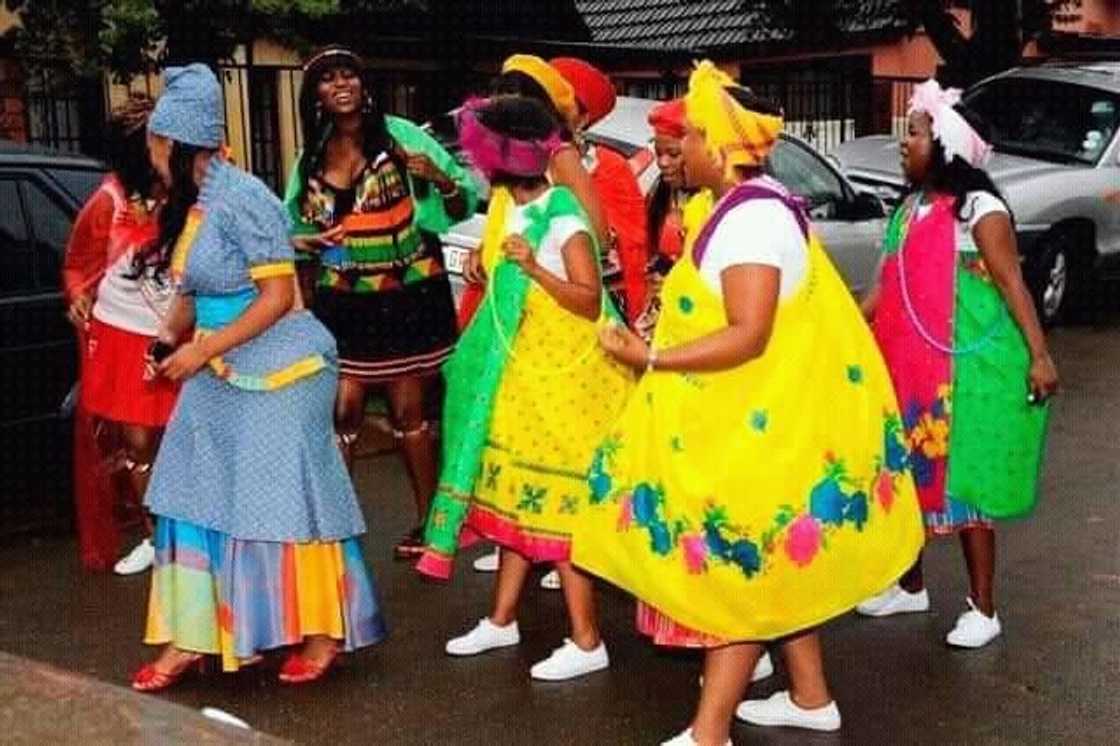The 8-Second Trick For South African Culture Today
The 8-Second Trick For South African Culture Today
Blog Article
What Does South African Culture Today Do?
Table of ContentsEverything about South African Culture TodayThe Of South African Culture TodayThe smart Trick of South African Culture Today That Nobody is Talking AboutEverything about South African Culture TodaySome Known Facts About South African Culture Today.Not known Facts About South African Culture Today
This adheres to with singing and drum pounding. The new bride and groom after that consult with the elders and discuss the relevance of their union. A matter of importance in Zambian villages is the diing of loved ones. All participants of the town placed cash, effort and time together for the funeral of the deceased.During the grieving period; males remain outside the home and the women stay inside the house of the deceased. After speaking concerning the departed, the village walks to the area of funeral to claim their last bye-byes. Songs and dance is a very crucial facet of the Zambian society. The various tribal units have their own dancing kinds; however, makishi is usual among all people.
4 Simple Techniques For South African Culture Today
When it involves music, drums are utilized the most, with a range of drumming ceremonies. In Zambia, bulk of the individuals are Christian; Protestant and Roman Catholic. There are tiny groups of Muslims and Hindus, with the rest complying with regional indigenous tribal beliefs.

South African heritage and culture is immensely diverse, and is composed of numerous various groups of people who each have their own traditions and beliefs. Having such a diversity of people and cultures is what makes South Africa so distinct. In real sense of the expression, we are a rainbow country.
Making it the 7th on the checklist of nations with the most Portuguese individuals in it outside of Portugal. Portuguese is not just a society, however it is also a language and a nationality. Portuguese individuals stem from the country of Portugal in Europe, however, due to Portugal (like many various other nations in Europe) checking out the world and conquering various other nations throughout the 15th 20th centuries, South Africa has what we call Portuguese South African's living in it.
The Facts About South African Culture Today Uncovered
Amongst the popular features of the topography is a plateau that covers nearly two thirds of the facility of the country. The plateau facility increases towards the southeast, where it culminates in the Drakensberg range, component of a cliff that divides the plateau from the seaside areas. The Drakensburg consists of Sparkling wine Castle, the greatest peak in the nation.
The region north of the Witwatersrand, called the bushveld, inclines downward from eastern to west towards the Limpopo River, which forms the international border. The western area of the plateau, the middleveld, also descends towards the west and differs in elevation in between the highveld and bushveld. Between the Drakensburg and the eastern and southern coast, the land descends to the sea.
Nearer the coastline there is a low-lying plain called the eastern lowveld. Southwest of the plateau the nation ends up being considerably much more dry, providing way to the hostile desert of the Great Karroo, approached the eastern by the reduced, better watered plateau of the Little Karroo. Separating the dry southerly inside from the sandy coastal of the southern coastline and West Cape is an additional range, the Langeberg.
South African Culture Today Can Be Fun For Everyone
The country's racially, ethnically, and politically separated background has actually produced national and subnational signs that still operate as signs of the nation, and others icons that are approved only by specific teams. The monoliths to white inhabitant occupation and political prominence, such as the Afrikaner Voortrekker ("leader") Monolith in Pretoria and the Rhodes Monolith honoring the British colonial realm home builder and Cape prime minister Cecil Rhodes, stay sectarian signs.
The initial modern inhabitants were the San ("bushman") hunter-gatherers and the Khoi ("Hottentot") peoples, who herded animals (South African culture today). The San might have been present for countless years and left proof of their existence in thousands of old cavern paintings ("rock art"). Bantu-speaking clans that were the forefathers of the Nguni (today's amaZulu, amaXhosa, amaSwazi, and vaTsonga peoples) and Tswana-Sotho language teams (today's Batswana and Southern and Northern Basotho) moved down from eastern Africa as very early as the fifteenth century

Both previous republics of the Orange Free State and Transvaal (South African Republic) were established by Afrikaner more inhabitants who beat and dispossessed the Basotho and Batswana. Lesotho would have been forcibly included into the Orange Free State without the expansion of British protection in 1869. The utmost unification of the nation resulted from the South African Battle (18991902) between the British and the 2 Afrikaner republics, which minimized the country to destroy at the beginning of the twentieth century.
Afrikaners traditionally considered themselves the only true South Africans and, while granting complete citizenship to all citizens of European descent, denied that status to people of shade until the democratic transition of 1994. British South Africans preserve a feeling of cultural and social connection to Great Britain without weakening their identification as South Africans.
Top Guidelines Of South African Culture Today
The variety and fragmentation within ethnic collections and the equilibrium of stress in between those groups during the twentieth century stopped interethnic civil dispute. While intergroup stress over resources, entitlements, and political supremacy stay, those disputes are as most likely to match Zulu against Zulu as Zulu against Xhosa or African against Afrikaner.
From colonial India, British merchants and administrators brought the rounded metal ornamental roofing systems and slim shoelace job columns that still epitomize the terraces of cottages in the areas and cities throughout the nation. Residences of prayer add a crucial architectural aspect also in the tiniest towns. In enhancement to the rising steeples and classic stonework of Afrikaans Dutch Reformed churches, Anglican churches, synagogues, mosques, and Hindu shrines give variety to the religious building scene.

Butchering and the brewing of typical cereal beer are essential in protecting the participation and goodwill of the Source forefathers that are considered the guardians of excellent fortune, prosperity, and health. Indian communities maintain their indigenous cooking customs and use them on Islamic and Hindu ritual and ritualistic events. Afrikaners and Coloured individuals collect at weekends and unique occasions at multifamily bbqs called braais, where community bonds are reinforced.
Since this was the key economic business of both black Africans and white homesteaders, problem between those teams focused on the property of grazing land and livestock. In 1867, the biggest read this post here ruby deposits in the globe were discovered at Kimberley in the west central location. The wide range from those fields assisted finance the exploitation of the best gold reef on the planet, which was uncovered on the Witwatersrand in 1886.
South African Culture Today Fundamentals Explained
This led to misunderstandings and purposeful misrepresentation in the ventures of white inhabitants and federal government authorities with African principals during the colonial duration (South African culture today). In the facility of African books, some aspects of public and mainly "tribal depend on" land tenure were maintained, and also in white backwoods, kinds of common tenure were still exercised in areas with African communities
After the autonomous makeover of 1994, programs for land restitution, redistribution, and reform were set up, however progress has actually been sluggish. The white minority still controls eighty percent of the land. Following agricultural land invasions in Zimbabwe, the Department of Land Matters has actually pledged to speed land redistribution.
Report this page